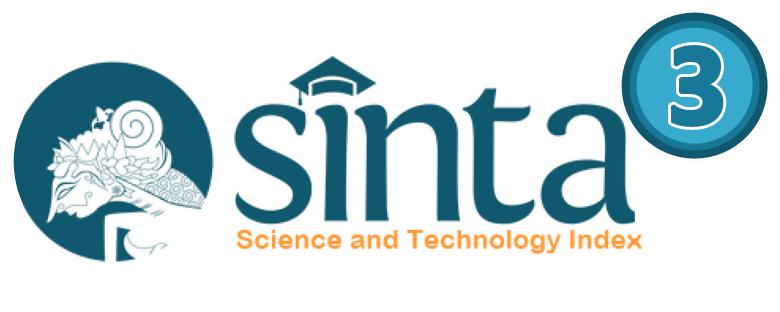ANALISIS KAUSALITAS ANTARA KEMISKINAN, KETIMPANGAN PENDAPATAN DAN TINGKAT PENDIDIKAN DI PROVINSI SUMATERA BARAT
Abstract
This study aims to determine and analyze the causal relationship between poverty, income inequality and education level in West Sumatra. This type of research is descriptive and associative research, where the data used is secondary data in the form of panel data from 2010 to 2017 with documentation data collection and literature study techniques obtained from related institutions and institutions. Data analysis used is the data used is descriptive analysis and inductive analysis. In inductive analysis there are several tests, namely: (1) Unit Root Test (2)Cointegration Test (3) Optimal Lag Determination (4) Granger Causality Test (5) PVAR Test.
The results of this study indicate that (1) income inequality Poverty and income inequality have a causality relationship where the probability of poverty to income inequality = 0.0307 and the probability of income inequality against poverty = 0.0166 (2) There is a one-way relationship between poverty and education level where poverty affects the level of education with a probability = 0.0024 while the level of education does not affect poverty with probability = 0.2402 (3) income inequality and education level do not have a one-way or two-way relationship where income inequality does not affect the level of education with probability = 0, 2445 and the level of education also does not affect income inequality with a probability = 0.5248 in the study period. Based on the results of this study, the authors suggest that the government combine policies on income equity and poverty such as the application of progressive taxes and subsidies to basic needs, equitable distribution of education in districts / cities in regencies / cities in West Sumatra. in addition, it is also expected that an increase in the nine economic sectors so that all three issues such as poverty, income inequality and education levels can be overcome.
Keyword: Poverty, Income Inequality, Education Level, PVAR
Full Text:
PDFReferences
Afzal, Muhammad. Malik, Muhammad Ehsan. Begum, Ishrat. Sarwar, Kafeel. Fatima, Hina. 2010. Relationship among Education, Poverty and Economic Growth in Pakistan: An Econometric Analysis. Journal of Elementary Education. Vol 22 No 1 Pages 23-45
Ariutama, I Gede Agus. Syahrul. 2017. Analisis Panel VAR: Tingkat Pendidikan, Tingkat Kesehatan, dan Ketimpangan Pendapatan di Indonesia. Google Scholar. Vol 1 (1), 1-16
Badan Pusat Statitstik Sumbar. 2018. Persentase Penduduk Miskin Menurut Kabupaten/Kota Provinsi Sumatera Barat ,2010-2017 (https://www.bpssumbar.go.id/) Diakses Pada 15 Mei 2018
Badan Pusat Statitstik Sumbar. 2018. Gini Ratio Menurut Kabupaten/Kota Provinsi Sumatera Barat ,2010-2017 (https://www.bpssumbar.go.id/) Diakses Pada 25 Mei 2018
Badan Pusat Statistik Sumbar. 2018. Rata-rata Lama Sekolah Menurut Kabupaten/Kota Provinsi Sumatera Barat 2010-2017 (https://www.bpssumbar.go.id/) Diakses Pada 11 September 2018
Bustomi, Muhammad Ja’far. 2012. Ketimpangan Pendidikan Antar kabupaten/Kota dan implikasinya di Provinsi jawa Tengah. Economics Development Analysis Journal. EDAJ 1 (2)
Ekananda, Mahyus. 2016. Analisis Ekonometrika Time Series. Jakarta: Mitra Wacana Media
Hassan, Syeda Anam. Zaman, Khalid. Gul, Shah. 2015. The Relationship Between Growth-Inequality-Poverty Triangle and Enviromental Degradation: Unveiling the Reality. Scencedirect. 10(2015)57-71
Maulidah, Fadlliyah. Soejoto, Ady. 2015. Pengaruh Tingkat Pendidikan, Pendapatan dan konsumsi Terhadap Jumlah Penduduk Miskin di Provinsi Jawa Timur. Universitas Negeri Surabaya. Vol. 3. No. 1, Tahun 2015
Ogbeide, Evelyn Nwamaka Osaretin . Agu, David Onyinyechi. 2015. Poverty And Income Inequality In Nigeria: Any Causality?. Asian Economic and Financial Review. 5(3):439-452
Rubiarko, Sabda Imani. Sakti, Rahmad Kresna. 2013. Analisis Faktor-Faktor Yang Mempengaruhi Disparitas Pendapatan di Jawa Timur Tahun 2008-2011. Fakultas Ilmu Ekonomi dan Bisnis Universitas Barwijaya.
Stevans,L,K., and Sessions,D,N., (2008). The Relationship between Poverty and Economic Growth Revisited. Journal of Income Distribution. Vol. 17, Issue No.1,pp. 5-20.
Sudiharta, Putu Seruni Pratiwi. Sutrisna, Ketut. 2014. Pengeruh PDRB Per Kapita, Pendidikan, dan Produtifitas Tenaga Kerja Terhadap Kemiskinan di Provinsi Bali. E-Jurnal Ekonomi Pembangunan Universitas Udayana. 3 [10] : 431-439
Sugiyanto. Mulyo, Jangkung Handoyo. Seleky, Rosalina Natalia. 2015. Kemiskinan dan Ketimpangan Pendapatan Rumah Tangga di Bojonegoro. Universitas Gadjah Mada. Vol. 26/No. 2, Desember 2015.
Suradi. 2007. Pembangunan Manusia, Kemiskinan dan kesejahteraan Sosial: Kajian Tentang Kebijakan Pembangunan Kesejahteraan Sosial di Nusa Tenggara Barat. Jurnal Penelitian dan Pengembangan Kesejahteraan sosial. Vol 12, No.03, 2007: 1-11
Todaro, Michael dan Stephen C Smith. 2006. Pembangunan Ekonomi edisi ke sembilan. Jakarta: Erlangga.
Veron, Emmanuelle Augeraud. Fabre, Alice. (2004). Education, poverty and child labour. Econometric Society 2004. Far Eastern Meetings 738. Econometric Society
DOI: http://dx.doi.org/10.24036/jmpe.v1i3.5031


